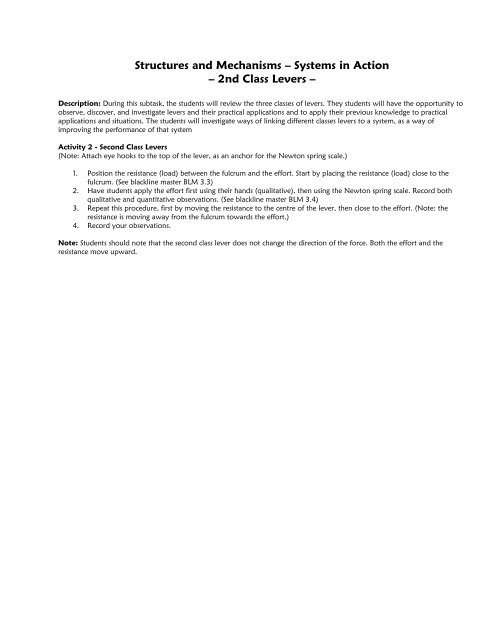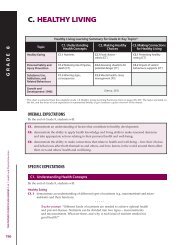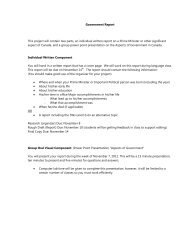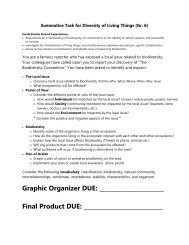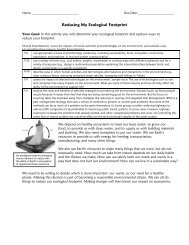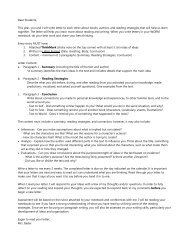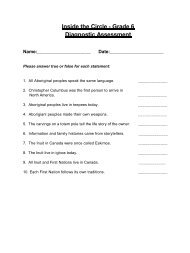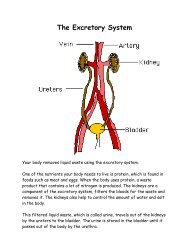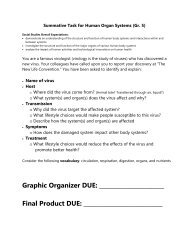1st class lever 2nd class lever 3rd class lever
1st class lever 2nd class lever 3rd class lever
1st class lever 2nd class lever 3rd class lever
Create successful ePaper yourself
Turn your PDF publications into a flip-book with our unique Google optimized e-Paper software.
Structures and Mechanisms – Systems in Action<br />
– <strong>2nd</strong> Class Levers –<br />
Description: During this subtask, the students will review the three <strong>class</strong>es of <strong>lever</strong>s. They students will have the opportunity to<br />
observe, discover, and investigate <strong>lever</strong>s and their practical applications and to apply their previous knowledge to practical<br />
applications and situations. The students will investigate ways of linking different <strong>class</strong>es <strong>lever</strong>s to a system, as a way of<br />
improving the performance of that system<br />
Activity 2 - Second Class Levers<br />
(Note: Attach eye hooks to the top of the <strong>lever</strong>, as an anchor for the Newton spring scale.)<br />
1. Position the resistance (load) between the fulcrum and the effort. Start by placing the resistance (load) close to the<br />
fulcrum. (See blackline master BLM 3.3)<br />
2. Have students apply the effort first using their hands (qualitative), then using the Newton spring scale. Record both<br />
qualitative and quantitative observations. (See blackline master BLM 3.4)<br />
3. Repeat this procedure, first by moving the resistance to the centre of the <strong>lever</strong>, then close to the effort. (Note: the<br />
resistance is moving away from the fulcrum towards the effort.)<br />
4. Record your observations.<br />
Note: Students should note that the second <strong>class</strong> <strong>lever</strong> does not change the direction of the force. Both the effort and the<br />
resistance move upward.


